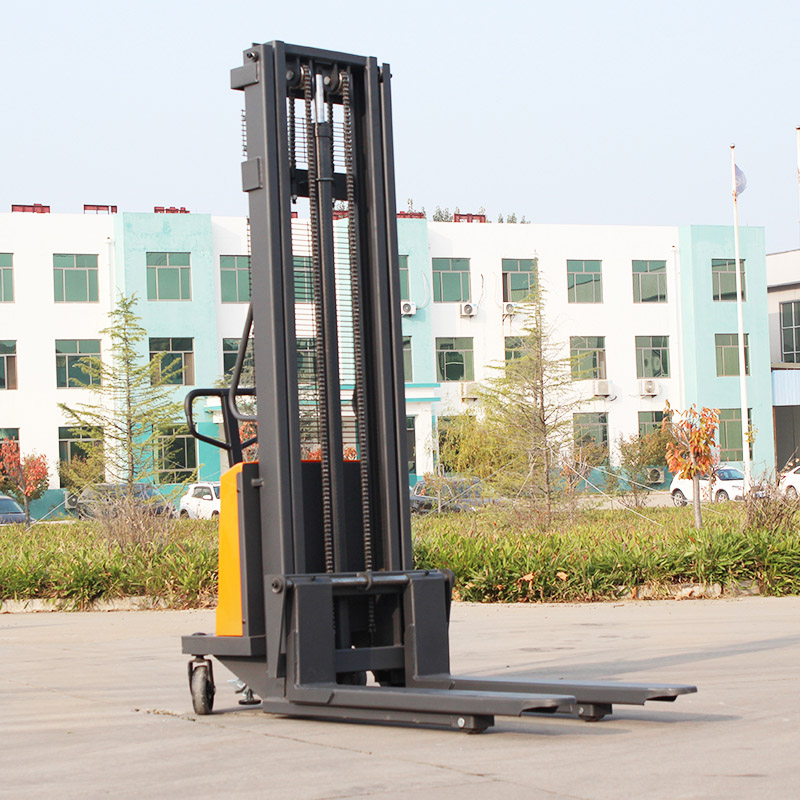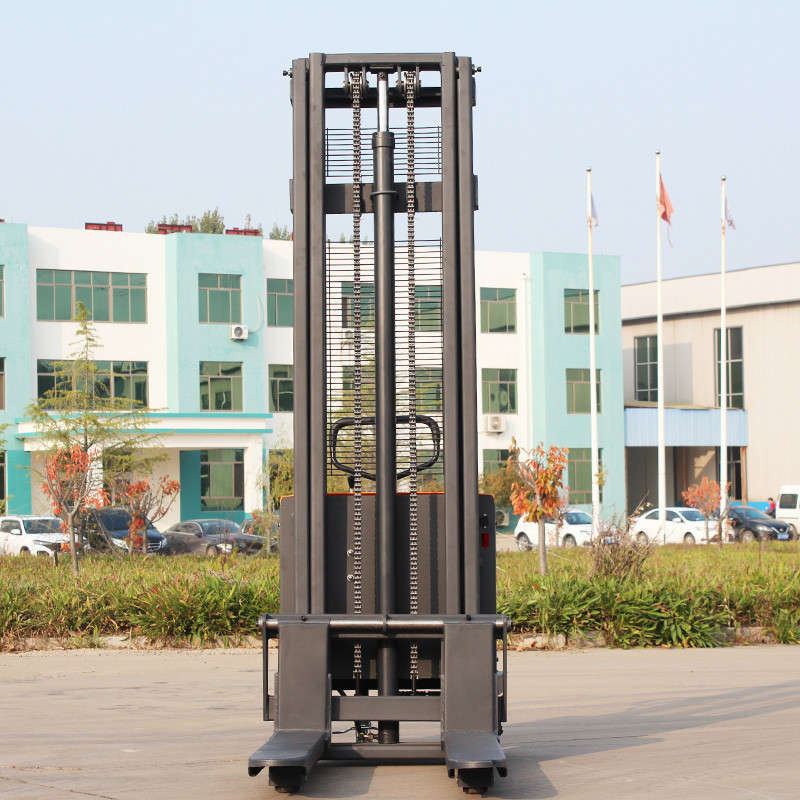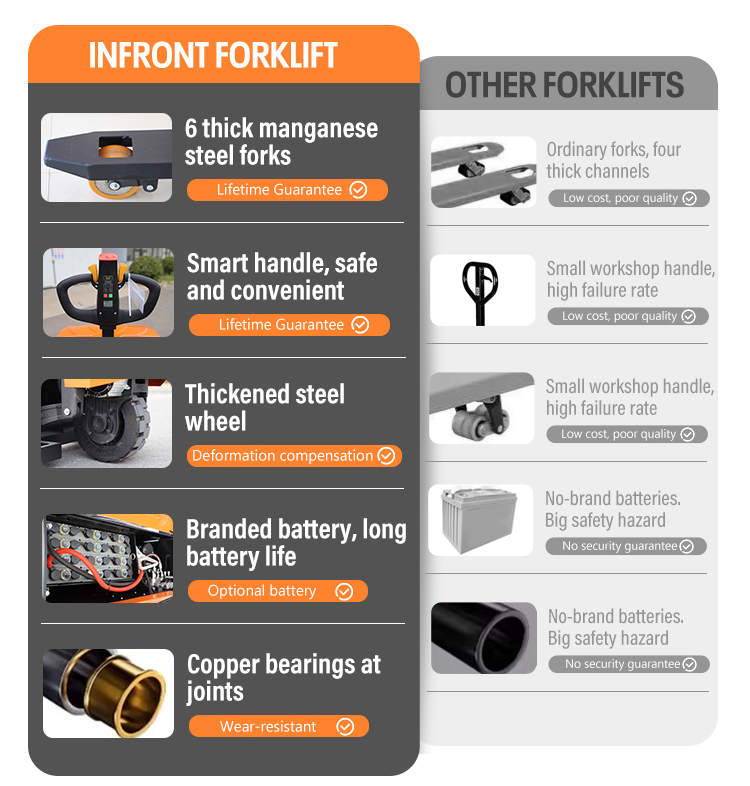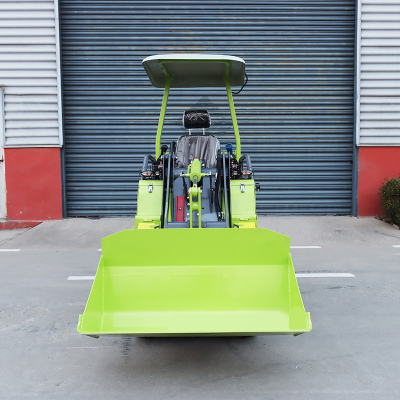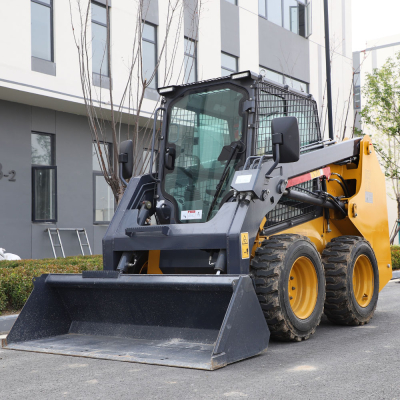Electric Stackers
As a highly efficient material handling equipment, electric stackers offer the following advantages:
Energy Efficiency
Fast Operation: Electric stackers boast high lifting and moving speeds, and their large-capacity batteries enable them to meet the demands of long, continuous operations. For example, fully electric stackers are typically five times more efficient than semi-electric stackers. The XCMG XCH907E5-E series stackers are equipped with a new-generation intelligent energy-saving technology platform and 500A fast charging, which reduces charging time by 25%, reduces energy consumption by 20%, and increases overall efficiency by 10%. They also boast the fastest lifting speed in the industry.
An electric stacker is an industrial vehicle powered by a battery and driven by an electric motor. It is primarily used for lifting, stacking, and short-distance transportation of goods. It is widely used in warehouses, workshops, logistics centers, ports, and other scenarios. It can efficiently complete vertical stacking of goods from the ground to shelves (with the highest stacking height reaching several meters) and horizontal transfer. It is a key piece of equipment to replace traditional manual stacking and improve the utilization of storage space.
High Energy Utilization: Using batteries as a power source, they offer higher energy efficiency and lower energy consumption than traditional internal combustion engines, embracing environmental protection.
Easy Operation
Simple Control: Equipped with a multi-function handle, they enable fully electric lifting, lowering, and travel. The buttons are designed for either hand and offer stepless adjustment. The electric steering system makes operation effortless for the operator. Excellent Visibility: Some stacker trucks, such as the ESC electric walkie-talkie stacker, feature a side-ride design, providing the operator with a wide field of view and facilitating precise operation. Others are equipped with high-quality, wide-view masts, making it easy to observe the load and the work environment.
Safe and Reliable
Multiple Safety Devices: A standard emergency shut-off switch cuts off the power in an emergency. An explosion-proof valve is installed at the bottom of the lift cylinder to prevent the mast from rapidly lowering even if the oil line bursts. The vehicle automatically switches to slow-speed mode after the forks have been raised 0.5 meters, enhancing operational safety.
High Stability: High-strength forks and a sturdy mast structure are used. Some models also come standard with balancing wheels, enhancing stability during lifting and driving, preventing rollovers.
Precise Electronic Control: The electronic control system provides precise control of the vehicle's speed and lifting height, effectively preventing overloading and misoperation, and reducing safety risks.
Low Maintenance Costs
Low Failure Rate: The AC drive motor is brushless and requires virtually no maintenance, significantly reducing maintenance costs. Electric stackers also have a relatively simple structure, resulting in less wear on their parts. Many models feature a modular design, facilitating troubleshooting and repair.
Long Battery Life: Electric stackers have a long battery life, and some models utilize maintenance-free batteries, reducing maintenance workload and costs.
Adaptability: Diverse Load Capacities: Electric stackers offer a wide range of load capacities, from 0.5 tons to over 5 tons, meeting the handling and stacking needs of various cargoes.
Wide Application: Their small turning radius makes them suitable for operation in narrow aisles and confined spaces, such as warehouses, workshops, and ports. They can also be used in petroleum, chemical, and pharmaceutical industries, where explosive mixtures may be present.
Product Details
1. Power System: Powered by a high-capacity battery (such as a lead-acid or lithium battery), coupled with a DC or AC drive motor, it provides power for travel, steering, and fork lift, achieving zero tailpipe emissions.
2. Working Components: Consisting of a mast (single- or multi-stage retractable), forks, and a lift cylinder, the machine precisely controls the fork lift height to meet the stacking requirements of various shelf levels (e.g., 2-6 meter high racks).
3. Control System: Equipped with an ergonomic handle or driver-style console, it integrates travel, steering, and lift controls. Some high-end models also feature speed adjustment and emergency braking, ensuring a low barrier to entry.
4. Safety System: Features include an explosion-proof valve (to prevent the mast from dropping suddenly in the event of a pipe rupture), an emergency power-off switch, overload protection, and limit switches (to prevent the mast from over-lifting) to ensure safe operation.



